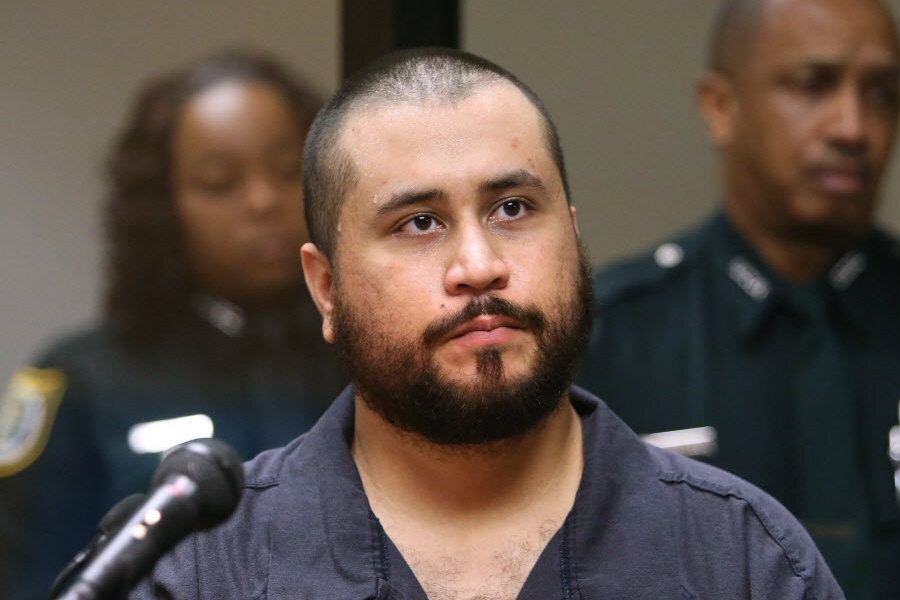Why George Zimmerman was arrested in Florida – again
Loading...
George Zimmerman is now facing another brush with the law. The Florida man, who was acquitted in 2013 over the shooting death of unarmed black teen Trayvon Martin, was arrested Friday on suspicion of domestic violence and aggravated assault with a weapon.
Police in Lake Mary, Fla. detained the 31-year-old around 10 p.m. Friday and booked him at the John E. Polk Correctional Facility, according to Seminole County documents.
During a court appearance Saturday morning, Zimmerman's bond was set at $5,000 and he was ordered to avoid contact with the woman who was not identified, the Associated Press reports.
Judge John Galluzzo gave few details of the incident, but said a wine bottle was involved and that the alleged assault happened at Zimmerman's home. Prosecutors questioned whether substance abuse treatment was needed, but the judge said that didn't seem to be a factor.
After the brief hearing, Zimmerman's attorney, Don West, told the Orlando Sun-Sentinel Saturday that his client was arrested after allegedly throwing a wine bottle at his girlfriend several days ago. Zimmerman is scheduled to appear back in court on Feb. 17.
Zimmerman, a former neighborhood watchman in Sanford, Fla., first made headlines in 2012 after a confrontation with 17-year-old Martin led to Zimmerman fatally shooting the teenager. He was charged with second-degree murder but was found not guilty in an emotionally-charged trial that brought to the fore discussions of race relations in America.
Zimmerman has since had several brushes with the law. Two weeks after his acquittal, he was pulled over for speeding in northern Texas. In September 2013, his estranged wife, Shellie, called 911 to report that Zimmerman had punched her father and was threatening them with a gun.
“I’m really, really afraid,” she can be heard saying in the 911 tape.
Mrs. Zimmerman decided not to press charges.
About two months later, Zimmerman’s girlfriend Samantha Scheibe told police that he had pointed a gun at her after she told him to move out. Zimmerman was arrested on charges of domestic violence and released on $9,000 bail. Scheibe later said her story had been misinterpreted and dropped the charges.
Before his latest arrest, Zimmerman allegedly threatened to kill another motorist in a road rage incident in Lake Mary in September 2014. According to local station WKMG-TV, a truck driver called police after a man he recognized as Zimmerman pulled up next to him, yelling, “Why are you pointing a finger at me?”
The truck driver, who declined to press charges, said Zimmerman had been carrying a gun and said, “Do you know who I am? I’ll (expletive) kill you.”
During the Trayvon Martin trial Zimmerman's run-ins with the law were not raised.
As The Christian Science Monitor reported, Zimmerman had had a previous restraining order against him from a previous girlfriend, and he had once been arrested for allegedly attacking a police officer. But these encounters, which did not end in convictions, were not in evidence in the Martin case.
The jury ... in the end, looked beyond Zimmerman's character simply focused on the encounter between the man and the teenager. An animated video allowed by the judge showed Trayvon coming up to Zimmerman and throwing a haymaker that put the shorter but much heavier man on his back. Zimmerman, who suffered some lacerations, said he was afraid for his life as Trayvon straddled him and beat him, and he pulled out the gun and shot Trayvon after he thought the teenager was reaching for the gun.
“The jury, given the evidence presented and looking only at that incident as opposed to other behaviors of his, came to the right verdict,” says James Alan Fox, a criminologist at Northeastern University in Boston. “The rest of us have the benefit now of hindsight and foresight surrounding the trial. [But] we are not bound by rule of evidence, nor do we have to follow ‘beyond a reasonable doubt’ when we pass our own judgments.”
While Zimmerman’s post-verdict brushes with the law do raise questions about the jury verdict, says George Ciccariello-Maher, a political science professor at Drexel University in Philadelphia, a more poignant message may be about how some Americans continue to see Trayvon, a tough-looking black youth, as the aggressor, despite evidence, including Monday’s arrest, that allegedly suggests Zimmerman has a proclivity for using guns to make a point.








